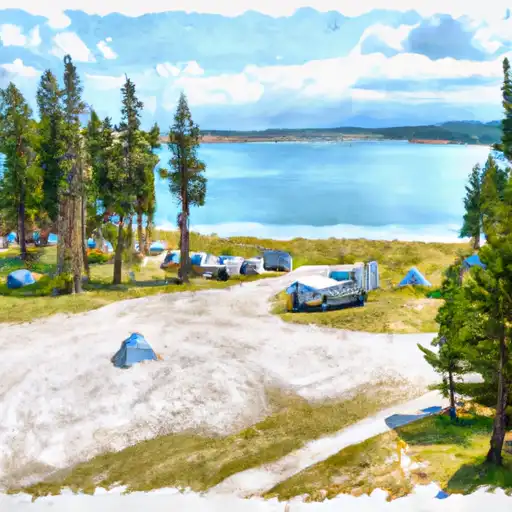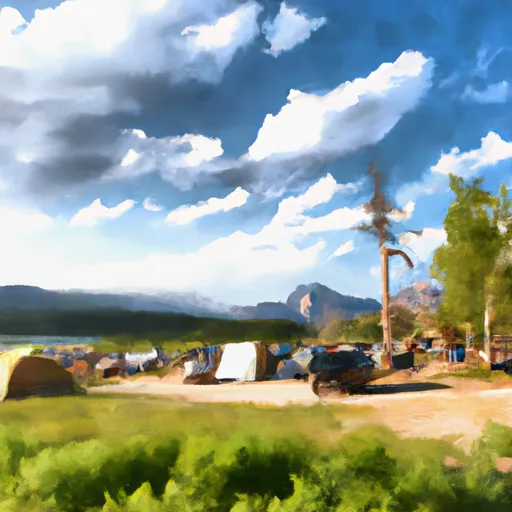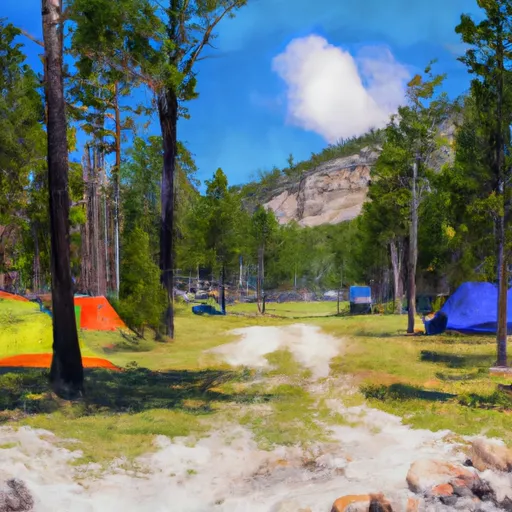Summary
Covering about 585,238 acres, this pristine wilderness lies adjacent to the southeastern boundary of Yellowstone National Park and is part of the greater Yellowstone ecosystem. Here are some key points about Teton Wilderness that can be verified through multiple independent sources:
1. Reasons to Visit:
- Immersive Nature Experience: Teton Wilderness offers an incredible opportunity to experience the untamed beauty of nature. With its diverse landscapes, including majestic mountains, serene alpine lakes, dense forests, and meandering rivers, it provides a haven for outdoor enthusiasts and nature lovers.
- Wildlife Viewing: The wilderness is home to various species, including grizzly bears, black bears, wolves, moose, elk, bighorn sheep, and many others. Wildlife enthusiasts can witness these animals in their natural habitat and appreciate their ecological significance.
- Wilderness Adventure: Teton Wilderness presents a range of outdoor activities such as hiking, backpacking, camping, fishing, horseback riding, and wildlife photography. The vastness of the area allows visitors to explore and discover hidden gems while experiencing the thrill of adventure.
2. Points of Interest:
- Two Oceans Plateau: Located within Teton Wilderness, this unique geological feature divides the Continental Divide, with streams flowing into both the Atlantic and Pacific Oceans.
- Two Ocean Lake: This picturesque lake is situated on the Two Oceans Plateau and offers stunning views of the surrounding mountains. Visitors can enjoy fishing, boating, or simply revel in the tranquility of the area.
- Yellowstone River: The eastern boundary of Teton Wilderness is marked by the Yellowstone River, a renowned fly-fishing destination that attracts anglers from around the world.
- Moran Canyon: This scenic canyon is a popular spot for hiking and wildlife viewing, with opportunities to spot elk, moose, and bears.
3. Interesting Facts:
- Teton Wilderness is the second-largest designated wilderness area in Wyoming and is managed by the Bridger-Teton National Forest.
- The wilderness area does not contain any roads, enhancing its remote and untouched character.
- Teton Wilderness is part of the Greater Yellowstone Ecosystem, one of the largest nearly intact temperate ecosystems on Earth, renowned for its biodiversity and ecological importance.
4. Best Time of Year to Visit:
- The best time to visit Teton Wilderness depends on personal preferences and the desired activities. Summer (June to August) offers pleasant weather, wildflowers, and abundant wildlife. Fall (September to October) showcases stunning autumn colors and fewer crowds. However, it's important to note that weather conditions and access may vary, and it's advisable to check with local authorities or visitor centers for up-to-date information before planning a trip.
Remember to consult multiple independent sources to corroborate the information provided, as conditions and details can change over time.
Weather Forecast
Park & Land Designation Reference
Large protected natural areas managed by the federal government to preserve significant landscapes, ecosystems, and cultural resources; recreation is allowed but conservation is the priority.
State Park
Public natural or recreational areas managed by a state government, typically smaller than national parks and focused on regional natural features, recreation, and education.
Local Park
Community-level parks managed by cities or counties, emphasizing recreation, playgrounds, sports, and green space close to populated areas.
Wilderness Area
The highest level of land protection in the U.S.; designated areas where nature is left essentially untouched, with no roads, structures, or motorized access permitted.
National Recreation Area
Areas set aside primarily for outdoor recreation (boating, hiking, fishing), often around reservoirs, rivers, or scenic landscapes; may allow more development.
National Conservation Area (BLM)
BLM-managed areas with special ecological, cultural, or scientific value; more protection than typical BLM land but less strict than Wilderness Areas.
State Forest
State-managed forests focused on habitat, watershed, recreation, and sustainable timber harvest.
National Forest
Federally managed lands focused on multiple use—recreation, wildlife habitat, watershed protection, and resource extraction (like timber)—unlike the stricter protections of national parks.
Wilderness
A protected area set aside to conserve specific resources—such as wildlife, habitats, or scientific features—with regulations varying widely depending on the managing agency and purpose.
Bureau of Land Management (BLM) Land
Vast federal lands managed for mixed use—recreation, grazing, mining, conservation—with fewer restrictions than national parks or forests.
Related References
Area Campgrounds
| Location | Reservations | Toilets |
|---|---|---|
 Pinnacles
Pinnacles
|
||
 Pinnacles Campground
Pinnacles Campground
|
||
 Brooks Lake
Brooks Lake
|
||
 Brooks Lake Campground
Brooks Lake Campground
|
||
 Brooks Lake Creek Falls Campground
Brooks Lake Creek Falls Campground
|
||
 Falls
Falls
|
